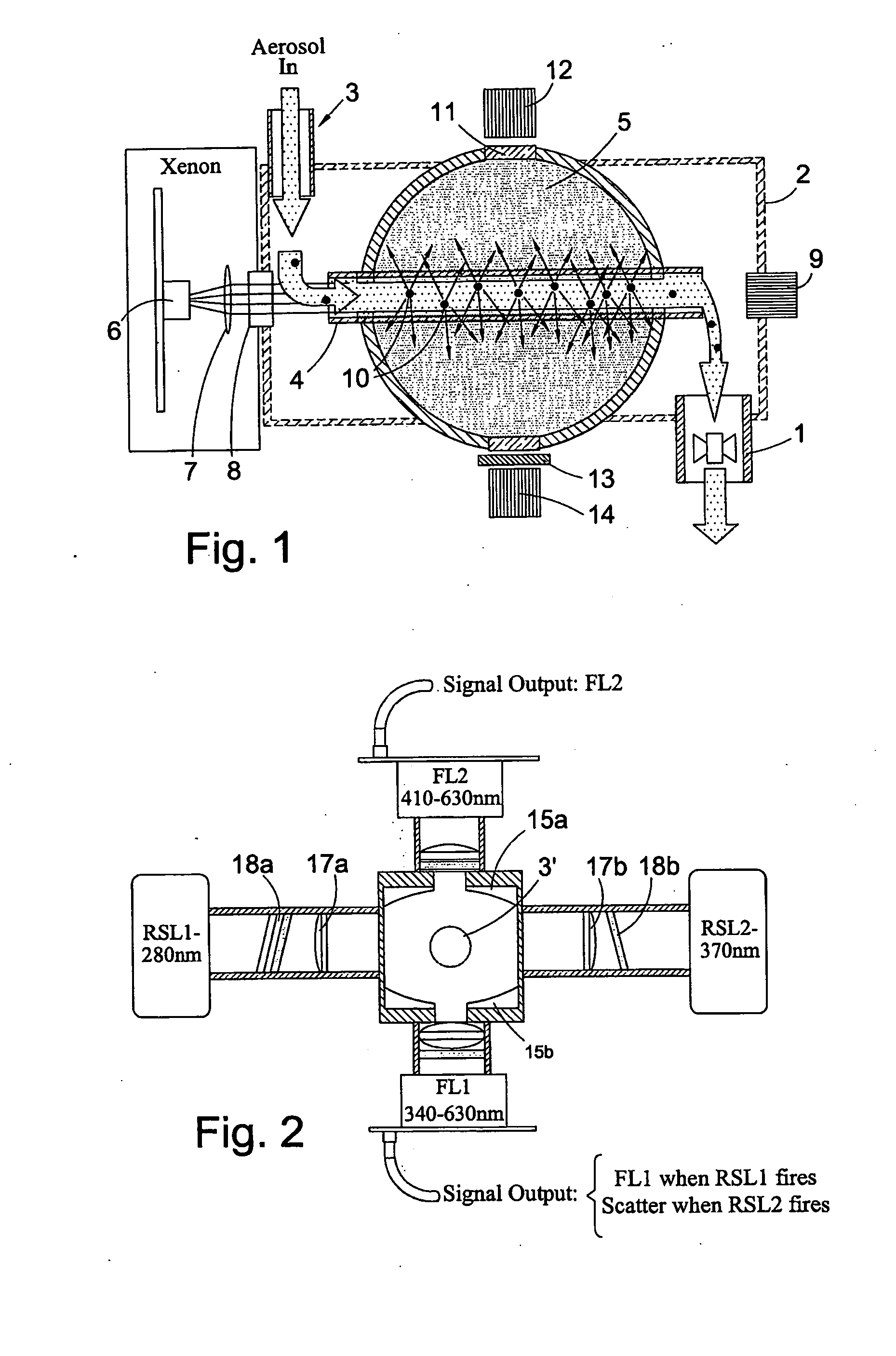Fluid borne particle analyzers
a technology of fluid borne particles and analyzers, which is applied in the direction of fluorescence/phosphorescence, optical radiation measurement, instruments, etc., can solve the problems of contaminating industrial products and processes, affecting the sensitivity of the body, so as to achieve the effect of maximising the opportunity and enhancing the sensitivity
- Summary
- Abstract
- Description
- Claims
- Application Information
AI Technical Summary
Benefits of technology
Problems solved by technology
Method used
Image
Examples
second embodiment
[0055] In the invention, the optical filter 8 is replaced by a set of filters supported in, for example, a rotating filter-wheel, such that successive pulses of radiation from the xenon source 6 are filtered to transmit a succession of different wavelength bands. If, for example, the filter wheel held three filters, then the xenon would be triggered to produce three pulses in rapid succession, followed by a gap of ˜0.5 seconds. Thus the particles suspended within the quartz tube 4 would sequentially be illuminated at three different wavelength bands, and the outputs recorded from the fluorescence detector 14 would reflect the degree to which specific biological fluorophores such as Tryptophan or NADH were present. This information would significantly enhance the ability of the invention to discriminate various types of biological particles in the air.
third embodiment
[0056] In the invention, the number of ‘fluorescence detector’ windows 12 could be increase to typically three or four, with each having a different optical filter. In this way, the spectral distribution of fluorescence radiation emanating from the illuminated particles could be measured. This would further enhance the ability of the invention to discriminate various types of biological particles in the air. (A drawback of implementing additional windows in the integrating sphere is that the ‘sphere multiplier’ will decrease, thus reducing the ‘optical gain’ of the sphere and reducing overall sensitivity to low particle fluxes).
fourth embodiment
[0057] In the invention, the fluorescence detector 14 and its associated optical filter 13 are replaced by a spectrometer capable of providing an output representative of the spectral distribution of fluorescent light emanating from the particles. Again, this would increase discrimination of biological particles in the air, but at the cost of additional complexity and manufacturing cost.
[0058] Turning now to FIGS. 2 to 4, these show a simplified low-cost bio-aerosol fluorescence sensor designed for unattended deployment in medium to large area networks surrounding vulnerable military or civilian sites. The sensor uses as the illumination source two compact xenon flash units RSL1, RSL2 to excite fluorescence in an aerosol sample volume of ˜5 ml. The aerosol is drawn from the ambient environment in through inlet pipe 3′ and out via outlet pipe 1′ at a flow rate of 10 litres min−1
[0059] A standard COTS absorption filter 18a restricts the excitation radiation from first xenon RSL1 to th...
PUM
 Login to View More
Login to View More Abstract
Description
Claims
Application Information
 Login to View More
Login to View More - R&D
- Intellectual Property
- Life Sciences
- Materials
- Tech Scout
- Unparalleled Data Quality
- Higher Quality Content
- 60% Fewer Hallucinations
Browse by: Latest US Patents, China's latest patents, Technical Efficacy Thesaurus, Application Domain, Technology Topic, Popular Technical Reports.
© 2025 PatSnap. All rights reserved.Legal|Privacy policy|Modern Slavery Act Transparency Statement|Sitemap|About US| Contact US: help@patsnap.com



